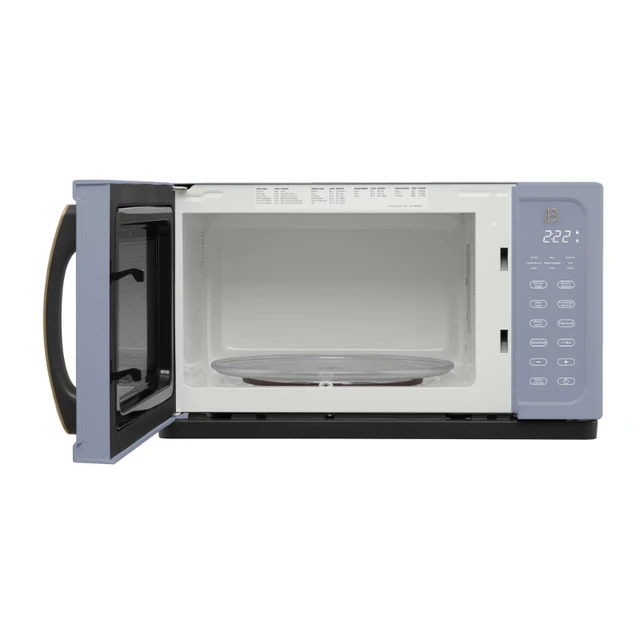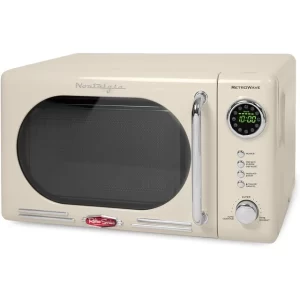What type of radiation is in a microwave?
Introduction:
Microwaves are a common household appliance used for heating, cooking, and defrosting food. They operate by emitting a specific type of electromagnetic radiation. Understanding the type of radiation in a microwave is important for comprehending how microwaves work, their effects on food, and safety considerations. In this article, we will explore the type of radiation in a microwave, its position in the electromagnetic spectrum, the behavior of this radiation, and the safety precautions associated with its use.

What type of radiation is in a microwave?
Electromagnetic Spectrum:
The electromagnetic spectrum encompasses a wide range of electromagnetic radiation, including radio waves, microwaves, infrared, visible light, ultraviolet, X-rays, and gamma rays.
Each type of radiation has different properties and applications.
Definition of Microwave Radiation:
Microwave radiation refers to a specific range of electromagnetic waves within the electromagnetic spectrum.
Microwaves have longer wavelengths and lower frequencies than visible light but shorter wavelengths and higher frequencies than radio waves.
Characteristics of Microwaves:
Microwaves are a form of non-ionizing radiation, meaning they do not possess enough energy to remove electrons from atoms or molecules.
They are generally considered to be safe when used appropriately according to manufacturer instructions.
Microwaves in the Electromagnetic Spectrum:
Microwaves are positioned in the electromagnetic spectrum between radio waves and infrared radiation.
Their frequency ranges from approximately 300 megahertz (MHz) to 300 gigahertz (GHz), with corresponding wavelengths of about 1 millimeter (mm) to 1 meter (m).
Interaction with Water Molecules:
One of the key interactions of microwave radiation is with water molecules.
Heating Mechanism:
Microwaves generate heat by agitating the water molecules in food.
As the water molecules absorb microwave radiation, they gain energy and begin to vibrate rapidly, leading to an increase in temperature.
Penetration Depth:
For example, microwave radiation can penetrate food more effectively than other materials due to its interaction with water molecules.
Safety Considerations:
While microwaves are generally safe when used correctly, it is important to follow safety guidelines to minimize potential risks.
Microwaves should not be operated with damaged or faulty door seals, as they may leak radiation.
It is advisable to use microwave-safe containers and avoid heating certain materials, such as metals or plastics not labeled as microwave-safe.
Regulatory Standards and Guidelines:
Governments and regulatory bodies have established safety standards and guidelines for microwave ovens.
These standards ensure that microwave ovens comply with specific safety criteria and emit safe levels of radiation.
Non-Ionizing Radiation:
Microwaves belong to the category of non-ionizing radiation.
Non-ionizing radiation does not possess enough energy to remove electrons from atoms or molecules and thus does not cause ionization.
Comparison to Other Types of Radiation:
Microwaves differ from other types of radiation, such as X-rays and gamma rays, which fall under the category of ionizing radiation.
Ionizing radiation possesses higher energy levels and can cause ionization by removing electrons from atoms or molecules.
The potential harmful effects of ionizing radiation on living organisms require more stringent safety precautions and regulations.
Conclusion:
Microwave radiation refers to a specific range of electromagnetic waves positioned between radio waves and infrared radiation in the electromagnetic spectrum. Microwaves are non-ionizing radiation, meaning they do not possess enough energy to remove electrons from atoms or molecules. Safety considerations include using the microwave correctly, avoiding damaged components, and following guidelines for heating different materials. Regulatory standards and guidelines ensure that microwave ovens emit safe levels of radiation. By understanding the type of radiation in a microwave and adhering to safety practices, we can use this convenient kitchen appliance safely and effectively.

